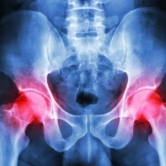Physiotherapy After Surgery Can Significantly Improve Your Recovery Process
Surgery Coming Up? Physiotherapy Can Help You Get Back to Your Life Faster with a great recovery process! Facing surgery can be a little scary. Not only are you unsure how the operation itself will go, you may not be clear about what to expect once the anesthesia has worn…




